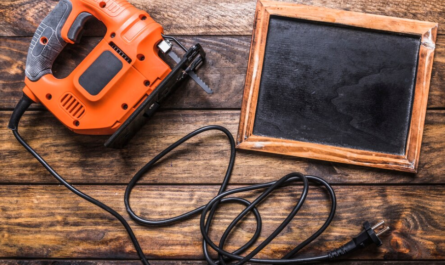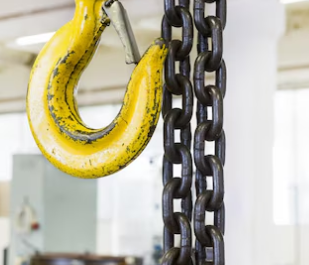
Introduction
Construction sites are among the most hazardous workplaces, and safety is always a priority. One of the most overlooked hazards is getting on and off construction equipment. Slips, trips, and falls from equipment are common causes of injuries. However, most of these incidents can be prevented by following a simple yet effective practice known as the “3-Point Contact” rule.
The 3-Point Contact rule is a fundamental safety principle that requires workers to maintain contact with the equipment using three points of contact—two hands and one foot, or two feet and one hand—at all times when getting on or off machinery. This rule ensures stability and balance, significantly reducing the risk of falling. In this safety talk, we will discuss the importance of the 3-Point Contact rule, how to implement it correctly, and additional safety tips to keep in mind.
The Importance of 3-Point Contact
Construction equipment, such as excavators, loaders, cranes, and trucks, often have elevated cabins, making it necessary for workers to climb up and down regularly. The risk of injury is high during these movements, particularly when workers are in a rush or fail to use proper safety techniques. Injuries from falls can range from minor bruises to severe fractures or even fatalities.
The 3-Point Contact rule is designed to minimize these risks by ensuring that workers always have a stable connection to the equipment. By maintaining three points of contact, you create a stable triangle of support, which significantly reduces the likelihood of slipping or losing balance. This simple practice can be the difference between a safe day on the job and a trip to the emergency room.
How to Use 3-Point Contact Correctly
To effectively use the 3-Point Contact rule, it’s essential to follow these steps:
1. Prepare Before Climbing:
– Before attempting to get on or off equipment, inspect the area. Make sure the steps, handrails, and ground surface are free of mud, oil, grease, snow, or other substances that could cause you to slip.
– If the steps or handrails are damaged or missing, report the issue immediately and do not use the equipment until it has been repaired.
2. Use the 3-Point Contact:
– Always face the equipment when getting on or off. This allows you to see where you’re placing your hands and feet.
– Maintain contact with the equipment using three points—two hands and one foot, or two feet and one hand—at all times.
– Move slowly and deliberately, making sure each hand and foot is securely placed before moving the next.
3. Avoid Jumping:
– Never jump off equipment, even if you’re in a hurry or think the ground is safe. Jumping increases the risk of injury because it eliminates the control provided by the 3-Point Contact.
– Use the steps or ladder provided, and always descend in a controlled manner.
4. Be Mindful of Your Surroundings:
– Pay attention to your surroundings, especially in wet or icy conditions. Take extra care when getting on or off equipment during inclement weather.
– Be aware of other workers or equipment in the vicinity. Ensure that your path is clear before you start climbing up or down.
5. Wear Proper Footwear:
– Always wear footwear that provides good traction and support. Steel-toed boots with non-slip soles are ideal for construction sites.
– Avoid wearing loose or damaged footwear that could catch on the equipment or cause you to lose your footing.
Common Mistakes to Avoid
Even with the best intentions, workers sometimes make mistakes that can lead to accidents. Here are some common errors to avoid:
Carrying Objects While Climbing:
– Never carry tools, materials, or other objects in your hands while climbing. This violates the 3-Point Contact rule and increases the risk of slipping or falling.
– Use a tool belt or pouch to carry small items, or hand them up or down to a coworker.
Rushing:
– Hurrying to get on or off equipment is a common cause of accidents. Take your time and focus on maintaining proper contact with the equipment.
– If you’re feeling rushed, stop and remind yourself that safety is more important than speed.
Ignoring Equipment Condition:
– Using equipment with damaged steps, ladders, or handrails is dangerous. Always inspect the equipment before use and report any issues immediately.
– If the equipment is not safe to use, wait for it to be repaired or use an alternative method.
Additional Safety Tips
Beyond the 3-Point Contact rule, there are other safety practices that can help prevent falls and injuries:
Use Proper Lighting:
– Ensure that the area around the equipment is well-lit, especially if you’re working in low-light conditions or at night.
– Good visibility helps you see potential hazards and maintain your footing.
Keep Equipment Clean:
– Regularly clean the steps, handrails, and other surfaces on your equipment to prevent the buildup of slippery substances.
– Encourage a culture of cleanliness and safety on the job site.
Stay Alert:
– Fatigue, distractions, and complacency can all lead to accidents. Stay alert and focused when getting on or off equipment.
– If you’re feeling tired, take a break before continuing to work.
Conclusion
The 3-Point Contact rule is a simple yet highly effective safety practice that can prevent serious injuries on construction sites. By maintaining three points of contact when getting on and off equipment, you significantly reduce the risk of falls and ensure your safety. Remember to take your time, stay focused, and always prioritize safety over speed. By following these guidelines, you can help create a safer work environment for yourself and your coworkers.
Stay safe, stay alert, and always use the 3-Point Contact rule.
“Start Your Website Journey Today – Exclusive Hostinger Discounts!”




